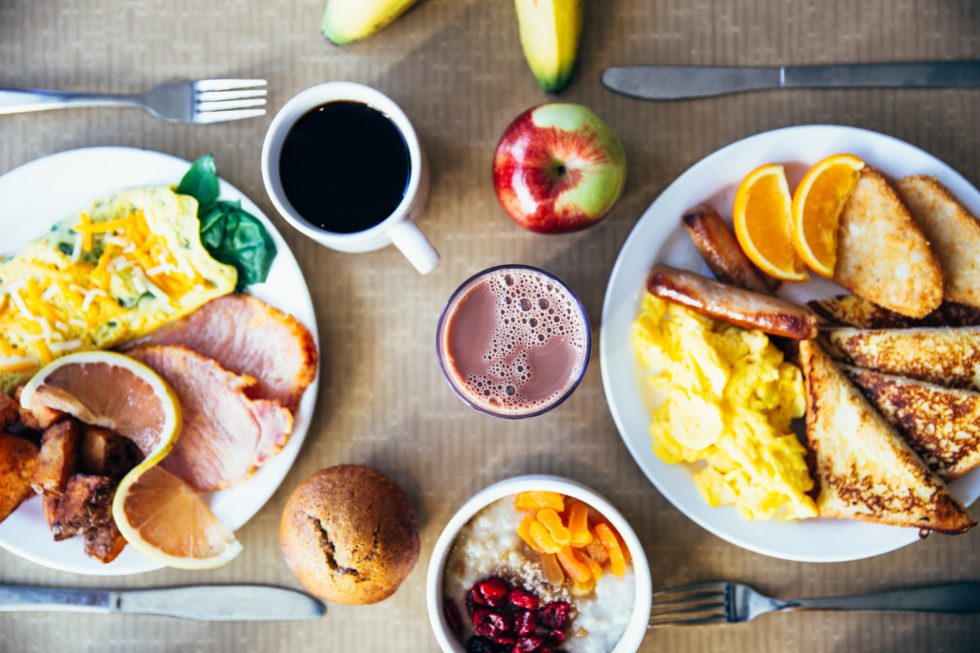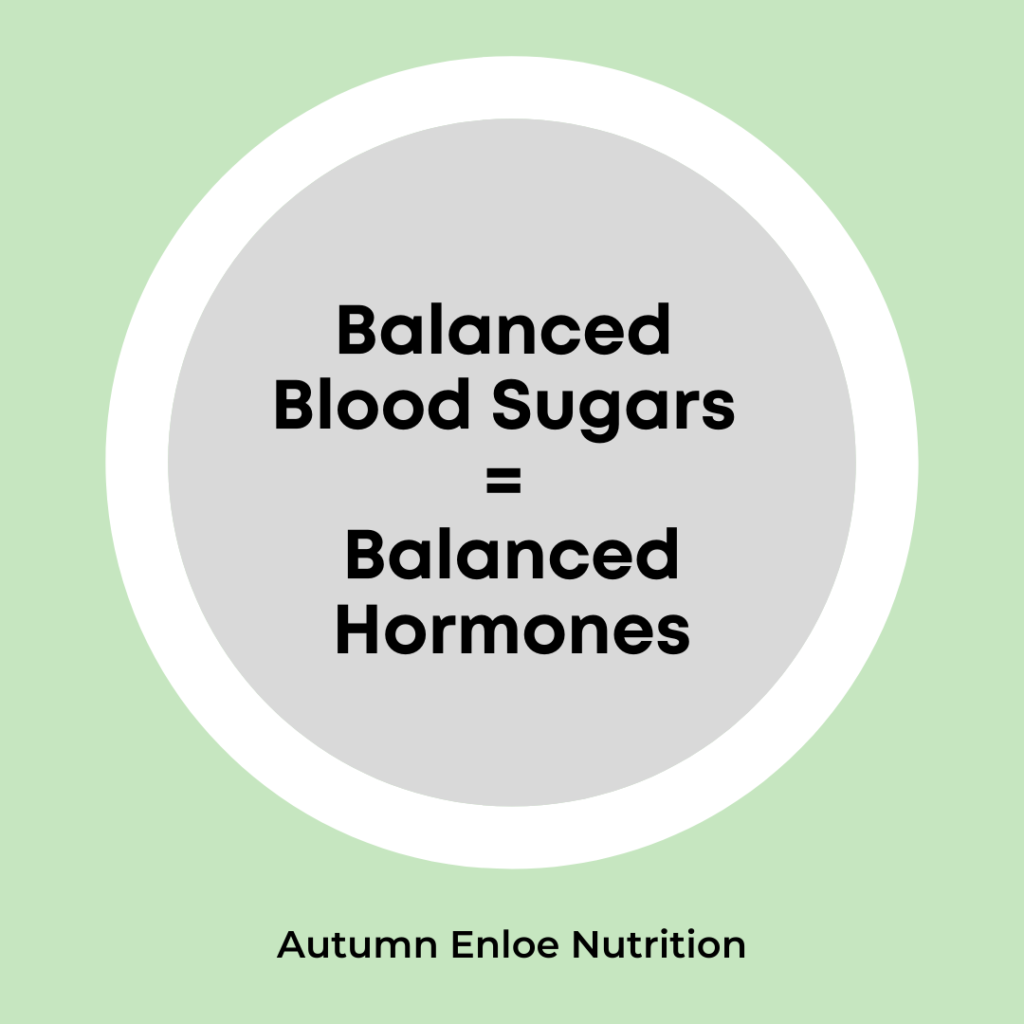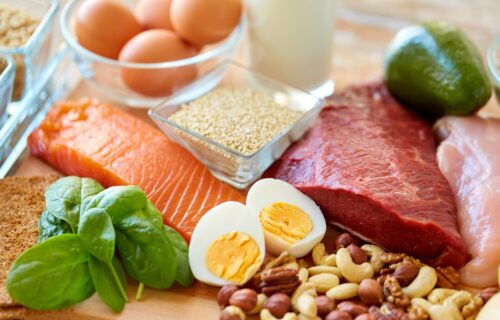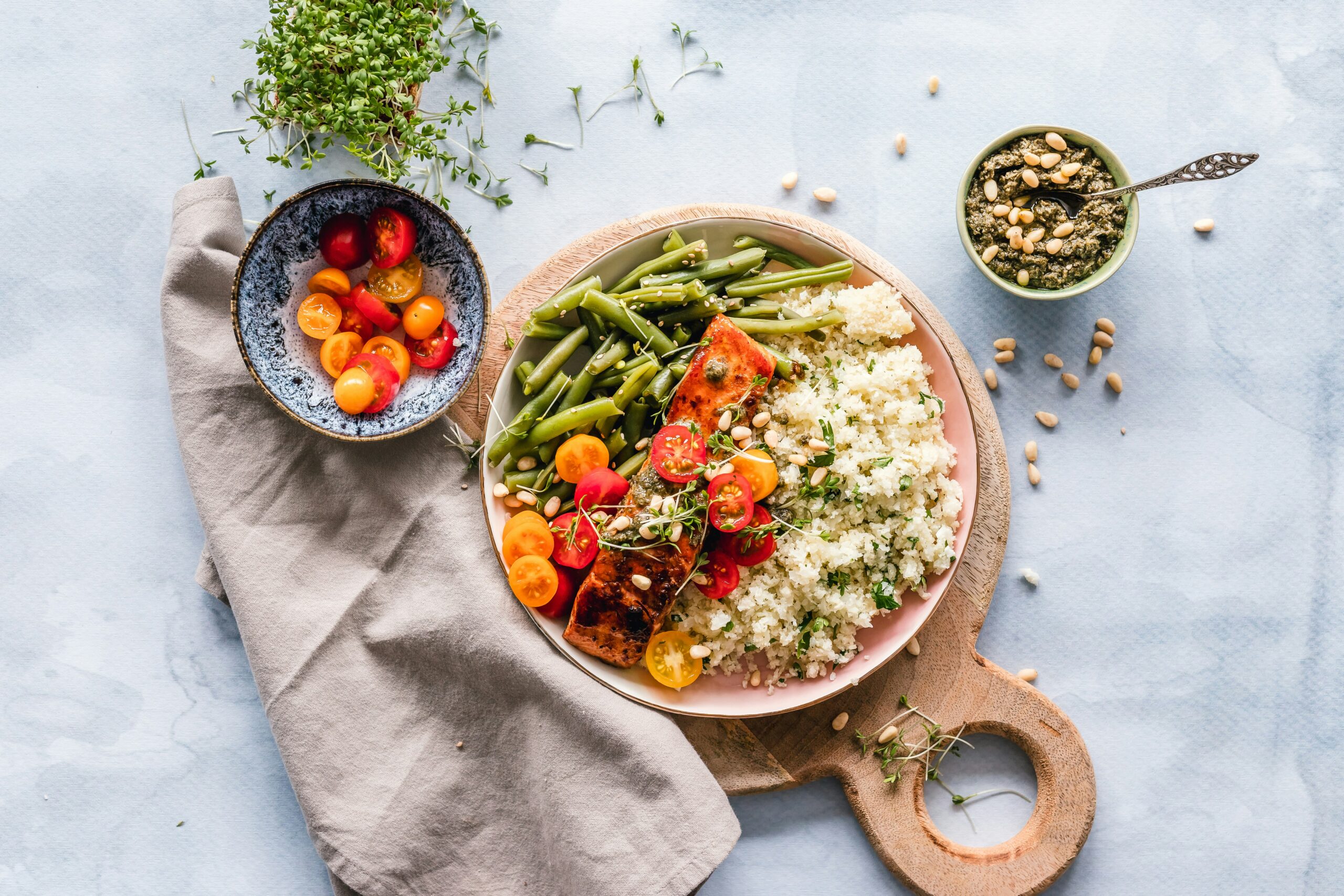
8 Ways to Naturally Support Balanced Blood Sugars
Ever get those “hangry” moments when you’re super hungry and crabby at the same time? I used to get those often.
Back when I was eating the Standard American Diet, I was filling my body with high carb, low fat foods, thinking it was a healthy option.
Turns out, all those “diet” foods really left me feeling more hungry, having sugar cravings, and kept my blood sugar on a roller coaster ride.
Supporting stable blood sugars is a key piece of my coaching program because it lays the foundation down for better energy, digestion, hormonal balance, and metabolism support.
Even some simple tweaks can help you keep your blood sugars more balanced, and this article will talk about eight of them.
Let’s First Talk About What Blood Sugar Is:
Blood sugar, or glucose, is the main sugar found in the blood. It comes from the food you eat, and is the body’s main source of energy.
Our blood sugar fluctuates throughout the day based on the different components of your meals. For example, a higher carb meal lacking in protein and fat can lead to a higher blood sugar spike.
Extreme blood sugar highs and lows can lead to major problems including fatigue, brain fog, weight gain, imbalanced hormones, irritability, and type 2 diabetes.
When working with clients, I find that one of the biggest energy drains is when blood sugars are on a rollercoaster ride all day.
What Balanced Blood Sugars Can Help With:
Beyond energy, having balanced blood sugars can also help with things like:
- Improve sugar cravings
- Support weight and insulin sensitivity
- Provide mental clarity
- Support balanced hormones
- Fuel your body with the energy it needs
- Support digestion
- Improve sleep quality
Balanced Blood Sugars and Your Hormones:

Balancing your blood sugars is key for balanced hormones for a number of reasons.
When your blood sugars levels are high, the hormone insulin is secreted more often leading to more fat storage, and excess testosterone. This can lead to heavy periods, acne, facial hair, insulin resistance, and PCOS.
When your blood sugars levels are low, your body relies on the stress hormone cortisol to keep your blood sugar level up. Your body then starts to crave high-carb and sugary foods to increase it, resulting in more sugar cravings, fatigue, and binge eating.
So, if you want to balance your hormones, focusing on balancing your blood sugars is the first place to start.
So, How Can We Focus on Supporting Balanced Blood Sugars?
Here are eight simple ways.
1. Incorporate a source of protein, nourishing fat, and fibrous carb at every meal (PFF): Including all three macronutrients will help prevent high spikes in blood sugar, along with help you feeling full for a longer period of time.
Examples:
– Veggie & Sausage Egg Casserole
– White Chicken & Veggie Chili topped with avocado slices
– Peaches & Pecan Overnight Oats
2. Start your day with a protein-packed breakfast: Protein acts as a buffer and helps prevent spikes in blood sugar. It’s also a precursor for positive brain chemicals (like dopamine), and keeps you feeling full longer.
So, ditch the morning cereal and opt for eggs, or a balanced smoothie with at least 25 grams of protein.
3. Pair a carb with a buddy: Include a protein or nourishing fat when eating a carbohydrate to prevent blood sugar spikes. As mentioned above, protein (as well as fat) acts as a buffer to keep blood sugars more stable.
For example: instead of just eating a banana by itself, pair with a protein/nourishing fat such as natural peanut butter.
4. Avoid going longer than 4-5 hours without eating: When we go too long without eating, our blood sugar levels drop. Your body then starts to crave foods to get your blood sugar level back up again (hello carbs and sugar).
Focus on adding in a balanced snack (ideally with protein) if you’re going longer than 4-5 hours between meals. You can find some examples of balanced snacks here.
Not hungry at the 4-5 mark? I’m all about listening to your body. If you find you aren’t hungry at the 4-5 mark, it could be because your previous meal was too large, and your macro portions need some tweaking. Not hungry in the morning? That’s a sign of a stressed metabolism, or snacking before bed.
5. Focus on low glycemic foods: The glycemic index is a measurement system that ranks foods according to their effect on your blood sugar levels. The higher the glycemic index value, the quicker the foods are digested and absorbed, resulting in a rapid rise and fall in blood sugar levels.
Foods with a low glycemic index value include: non-starchy veggies like asparagus, broccoli, cauliflower, zucchini and spinach, fruit such as apples, blueberries, peaches and strawberries, unsweetened dairy, beans and legumes, and nuts and seeds.
6. Incorporate movement you enjoy: Aim for 30 minutes each day of some type of movement you enjoy (such as walking, yoga, swimming, etc). Not only can movement help your muscles use up glucose for energy and help lower your blood sugar, it can also help reduce stress, and support your mental health.
If you need to break up the 30 minutes into 3-10 minute increments, that’s okay too!
7. Manage stress on a daily basis: When you’re feeling emotional or physical stress, your body released cortisol and glucagon, which can cause your blood sugar to rise. In addition, we tend to crave high-carb, sugary foods under stressful times (which causes blood sugar levels to go up even more).
Studies have found that managing stress through things like meditation or deep breathing exercises can reduce stress, support stable blood sugar levels, and may help improve insulin resistance (1).
8. Eat foods rich in chromium and magnesium: High blood sugars can sometimes be a result of nutrient deficiencies, including a deficiency in chromium and magnesium (2).
Chromium is associated with carb and fat metabolism, whereas magnesium has been shown to help with blood sugar levels. In fact, studies have found low levels of magnesium to be associated with type 2 diabetes and insulin resistance (3).
Chromium-rich foods: meats, broccoli, brazil nuts, Brewer’s yeast, mussels
Magnesium-rich foods: dark leafy greens, dark chocolate, bananas, avocados, beans and legumes, nuts, seed
The Bottom Line:
There’s several nutrition and lifestyle habits that can impact blood sugars. Although these eight tips are a great place to start, it’s also important to consider things like overall sugar consumption, sleep habits, or nutrition deficiencies.
Looking for Personalized Help with Supporting Your Blood Sugars?
Balanced blood sugars is a key piece of my coaching program, and if you’re looking for more individualized support with this, I encourage you to check out my program video HERE.
You can also check out my book, The Blood Sugar Balancing Handbook: Simple Recipes, Proven Methods, and Practical Strategies for Improving Blood Glucose Levels for Non-Diabetics.
Available for order it at:




Add A Comment